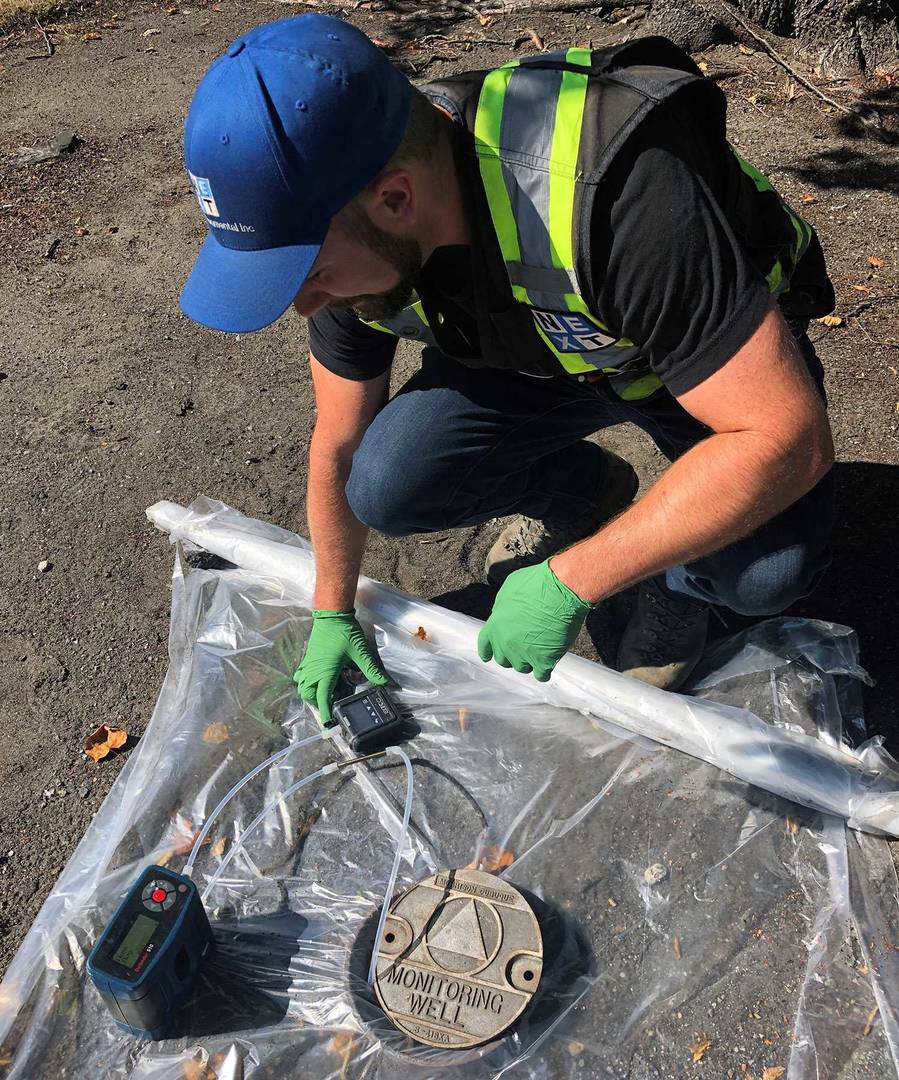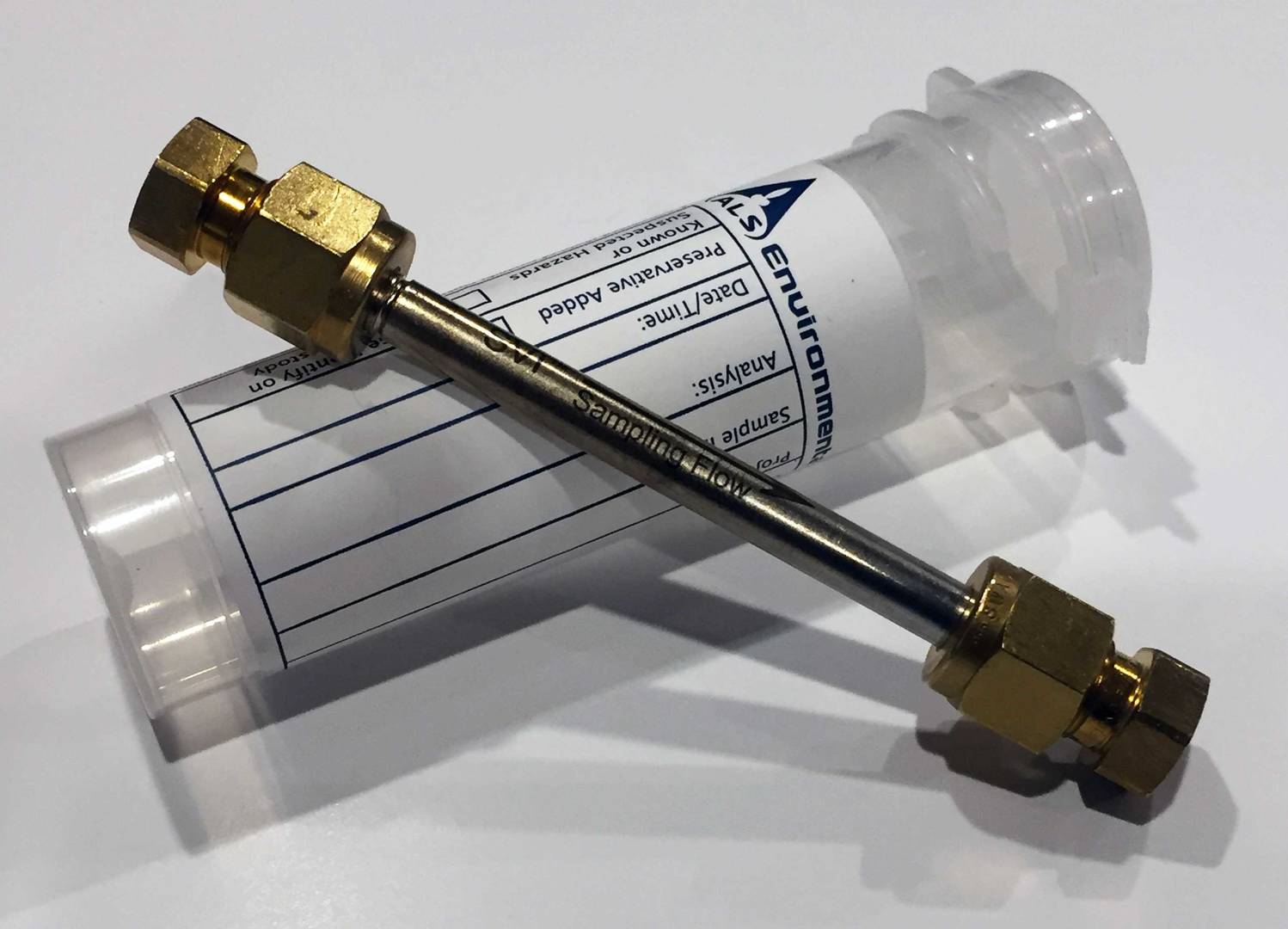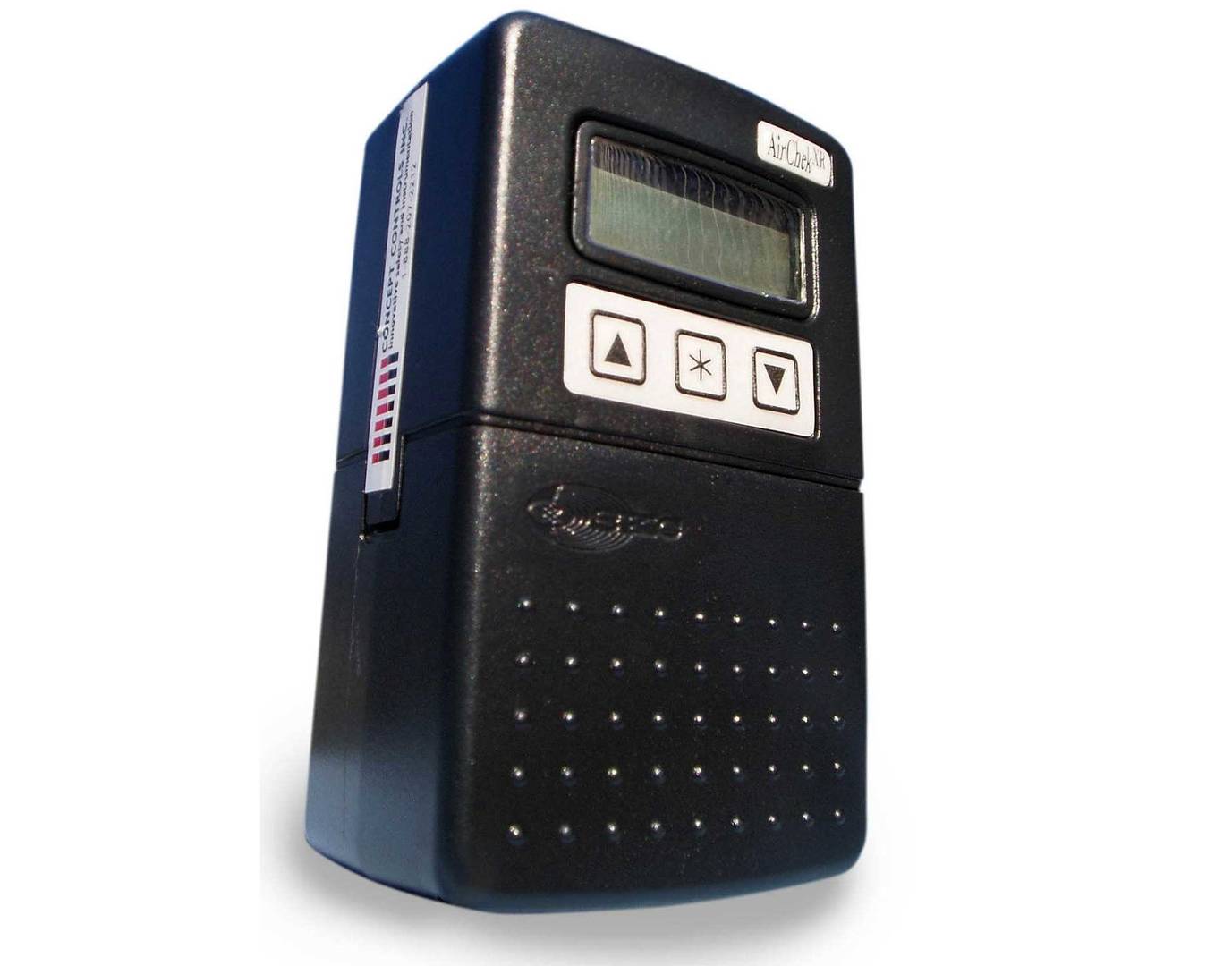EnviroMail 15 Canada
Quality and Sampling Benefits of Low Volume TD for VOCs in Soil Gas
New benefits to the efficiency of soil-gas sample collection for Volatile Organic Compounds (VOCs) by the Thermal Desorption (TD) method have become possible through recent validated innovations.

Sensitivity gains for this test have allowed ALS to offer a new TD soil-gas VOC method that now meets the lowest British Columbia Contaminated Sites Regulation vapour standards using soil-gas volumes of 0.5 L, a six-fold reduction from our previous requirement of 3 L for this application. Most Ontario Soil-Gas Indicator Levels can also be met with a 0.5 L soil-gas sample (except the residential value for ethylene dibromide, which requires 2 L). This smaller sample size also allows improvements in sample quality to be achieved under some conditions.
Collection of a 0.5 L soil-gas sample allows for a sampling time of five minutes at the standard flow rate of 100 mL/minute, which is the recommended sampling rate for coarse-grained soils or sub-slab soil-gas probes.
Benefits of Reduced TD Sample Volumes
In addition to the obvious benefit of faster sample collection times, reduced TD soil-gas sampling volumes can also contribute to data quality improvements for VOC test results.
Reduced sampling volumes minimize the potential for analyte breakthrough due to exceedance of Safe Sampling Volumes (SSVs) of the TD tube (see SSVs Explained). With sampling of only 0.5 L, there is virtually zero risk of component breakthrough, since this is less than 10% of the Safe Sampling Volume for the least retained VOC analyzed by the method (chloromethane).
Smaller sampling volumes also minimize the amount of water vapour collected onto the TD tube from high humidity soil-gas samples, which reduces potential analytical problems at the laboratory. With a 0.5 L soilgas sample, analytical impacts to VOCs due to humidity are practically eliminated.
Safe Sampling Volumes (SSVs) Explained
Modern TD sorbent tubes utilize multi-bed hydrophobic sorbents designed to effectively capture virtually all VOCs of environmental concern. Sorption capacities are very high for most VOCs, but a few highly volatile substances limit the maximum air volume that can be sampled prior to “breakthrough”, known as the “Safe Sampling Volume”.
ALS uses Perkin Elmer SVI tubes, which sorb and release most common VOCs of concern through a boiling point range corresponding to nC3 to nC26.
The chart below shows SSVs for the PE SVI TD tubes, measured by ALS using 70% relative humidity air. SSVs represent 2/3 of the air volume where 5% breakthrough was observed (as per US EPA TO-17(1) guidance). Perkin Elmer has reported similar results using nitrogen at 82% relative humidity.
Most VOCs have SSVs well in excess of 70L, so in most cases, higher sampling volumes may be used if ultra-low detection limits are required.
| Parameter | Safe Sampling Volume |
| bromomethane | 10L |
| chloromethane | 6L |
| dichlorodifluoromethane | 10L |
| dichloromethane | 40L |
| vinyl chloride | 10L |
| all other VOCs tested | >70L |
Benefits of Reduced TD Sampling Flow Rates
When sampling soil-gas from fine-grained low-permeability or watersaturated soils, it is very important to minimize the degree of vacuum formed in the probe during sample collection. Best practice is to minimize vacuum to less than 10” of water (19 Torr)(2); this decreases the potential for annular leakage or short-circuiting, and delivers optimal sampling pump performance.
In addition to these physical sampling issues, reduced vacuum also minimizes the potential for high-biased soil vapour results caused by enhanced volatilization or desorption of volatiles from soil that could occur due to excessive vacuum generated by the sampling process itself.
When collecting soil-gas from probes in low-permeability soils that are expected to generate significant vacuum levels, air sampling flows can be reduced to 50 mL/min or as low as 20 mL/min; a 0.5 L air sample can still be collected in 10-25 minutes at these reduced flow rates – six times faster than for collection of a 3 L sample!
New ALS Recommendations for Heavily Fuel Contaminated Sites
For sites contaminated with extremely high levels of fuels (particularly gasoline), collection of lower sample volumes greatly reduces the risk of exceeding TD tube sorption capacity. ALS has validated the absolute tube sorption capacity of our TD tubes to be in excess of 20,000 µg/ tube for aggregate volatile substances, measured as VHv6-13. Under controlled lab studies collecting weathered gasoline vapour at VHv amounts of 22,000 µg and 28,000 µg, ALS found analyte breakthroughs of 0.1% and 24% respectively.
Reducing soil-gas sample collection volumes to 0.5 L has been shown to virtually eliminate exceedances of TD tube capacity for fuel vapours, even under worst-case site conditions. For highly fuel-contaminated sites, ALS previously recommended collection of two independent samples at routine and low volumes, which is no longer necessary.

Pre-Testing of Each Tube Guarantees Cleanliness
Stringent tube conditioning and storage protocols are essential to control potential artifacts from previous samples collected on the same TD tube. For this application, ALS tests and confirms the cleanliness of every TD tube (to below 1/2 the DL for each substance) prior to approval and release for sample collection purposes.
Sampling Pump Requirements and Flow Rate Selection
Prior to initiating any TD sampling event, a suitable sampling pump is required, which must be pre-calibrated for the desired sampling flow rate. ALS routinely supplies pre-calibrated sampling pumps with sampling train (tubing and fittings) to connect sampling pumps to TD tubes, and including Y-splitters if required for parallel/duplicate sampling.
ALS recommends a default 100 mL/min flow rate, which is optimal for coarse-grained soils and sub-slab probes, but lower flow rates (down to 20 mL/min) can be calibrated where requested. Consider your site conditions (e.g. permeability) to select an optimal sampling flow rate.

How to Obtain Sampling Supplies
The ALS low sample volume TD soil-gas method is available through ALS Vancouver. Please contact your ALS Account Manager to arrange for supply of sampling tubes and/or pumps.References
- Method TO-17, Determination of Volatile Organic Compounds in Ambient Air Using Active Sampling onto Sorbent Tubes, US EPA Office of Research and Development, January 1999.
- Guidance on Site Characterization for Evaluation of Soil Vapour Intrusion into Buildings, Golder Associates, Burnaby, BC. Submitted to BC Ministry of Environment May 2011 by Science Advisory Board for Contaminated Sites in BC.





















































